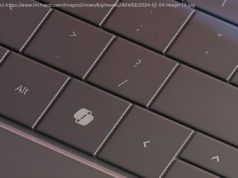Through a series of missteps and outright neglect, Microsoft essentially handed over the fate of its web browser – and its ability to shape the online world – to rival Chrome. The white flag of surrender was raised this month.
Microsoft’s announcement earlier this month that it was dumping its own browser technology for Google’s — turning Edge into a Chrome clone — was a stunning acknowledgement that the company had lost its decades-long battle for browser supremacy.
«We intend to adopt the Chromium open-source project… to create better web compatibility for our customers and less fragmentation of the web for all web developers,» Joe Belfiore, a corporate vice president in the Windows group, wrote in a Dec. 6 post to a company blog. But while Belfiore blew the open-source horn, he didn’t bother to recap how Microsoft reached this point when earlier in the century, it was the dominant browser maker, accounting for more than 90% of all usage after it laid waste to Netscape Navigator.
Microsoft’s fall was long but never inevitable. Mistakes, as they say, were made. We identified six that contributed to the decline of Redmond’s browser empire.
Although Google updated Chrome every six to eight weeks from the browser’s 2008 inception — and Mozilla accelerated Firefox’s pace to every six weeks beginning in 2011 — Microsoft stuck with a glacial cadence.
Internet Explorer received new features only with new major releases, which were separated by as many as five years (IE5 to IE6) and as few as one (IE10 to IE11). In the 10 years since Chrome’s debut — a span during which Google revamped the browser 70 times — Microsoft refreshed IE just four times (IE8 through IE11).
Even Edge, which Microsoft trumpeted as its «modern» browser, advanced at a torpid pace. At its speediest, that tempo meant Microsoft added new features to Edge only every six months. While cheetah-like compared to IE, Edge was a tortoise to Chrome’s and Firefox’s hares.
At one point, reports surfaced that Microsoft would sever the upgrade ties between Windows 10 and Edge so the latter could be updated more frequently. The separate schedule for Edge was to kick off in the fall of 2017.
Didn’t happen.
Microsoft called it quits on IE with version 11, the one included with Windows 10. From 10’s mid-2015 debut, IE was maintained, yes, with security fixes, but new features? Not a chance. Instead, the company devoted all its browser-building resources to Edge.
That meant Microsoft abandoned almost all of its customers to the competition. At the beginning of 2016, about 89% of all Windows PCs ran Windows XP, Vista, 7,8 or 8.1. Nearly 9 out of every 10 Windows machines, then, looked at a dead-man-walking browser if they ran IE.






